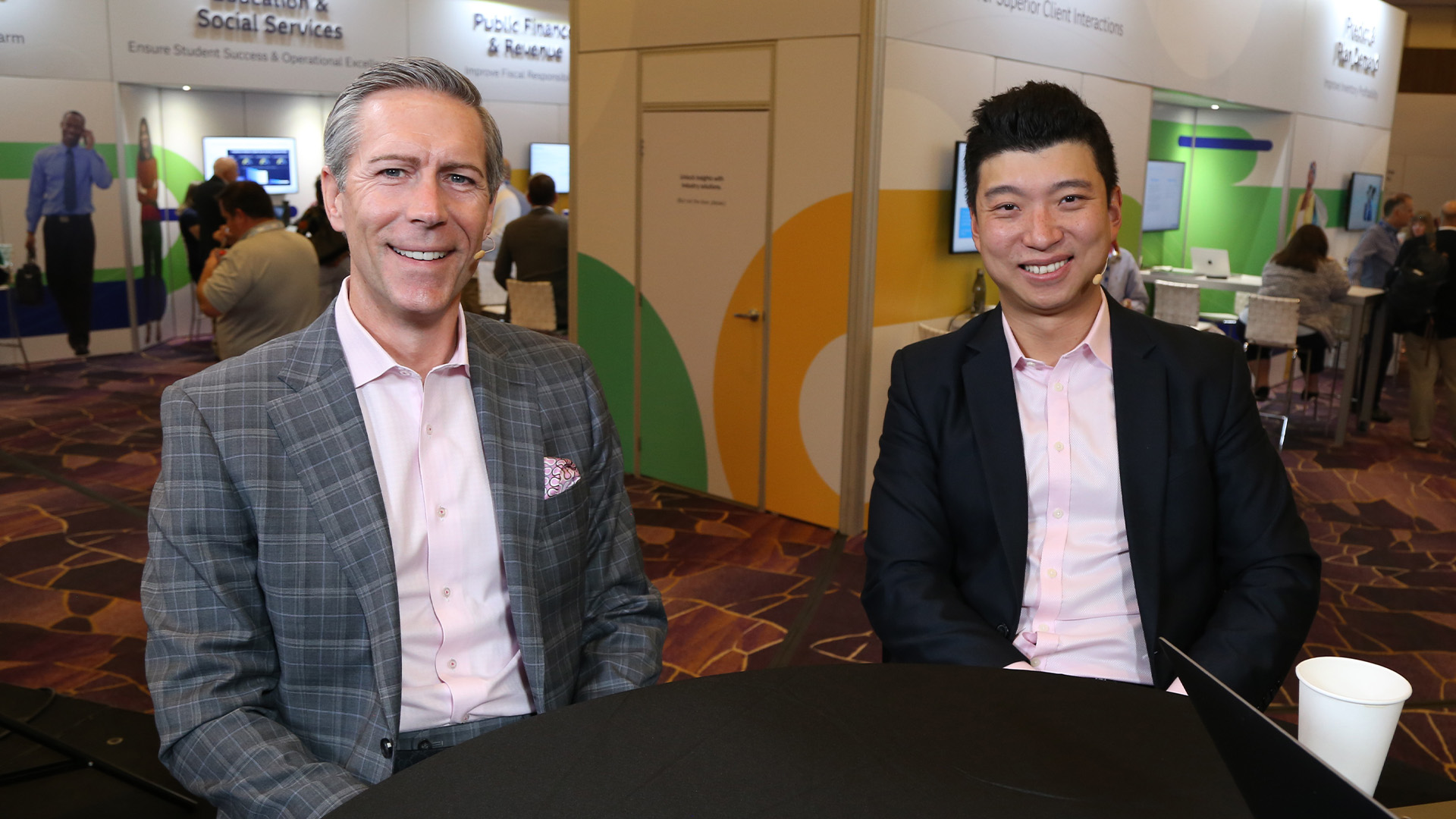 AI
AI
 AI
AI
 AI
AI
Alongside other hypersensitive sectors such as healthcare and defense, finance — especially with the integration of AI for finance — remains critical at both public and private levels. Failures and crashes can snowball to create a plethora of large-scale problems.
Artificial intelligence is now being weaved into every fabric of daily life. How are financial industry players leveraging AI and large language models to counter fraudulent activities and assess/mitigate risk at scale?
“The other things that we’ve been seeing is the utilization of deepfakes, particularly as far as enhancement in trying to bypass, let’s say, your voice biometrics and then also your facial recognition applications,” said Long Jiang (pictured, right), assistant vice president of fraud analytics and strategy at Credit One Bank N.A. “All of that translates into risk that we’re looking as far as how we can stop it, how we can prevent it.”
Jiang and Stu Bradley (left), senior vice president of risk, fraud and compliance solutions at SAS Institute Inc., spoke with theCUBE Research executive analyst John Furrier and chief analyst Dave Vellante at SAS Innovate, during an exclusive broadcast on theCUBE, SiliconANGLE Media’s livestreaming studio. They discussed the transformative power of AI and its implications for the banking industry, from fraud detection to operational efficiency. (* Disclosure below.)
AI isn’t going to completely take over critical finance industry tasks, such as accounting, auditing and strategy. Rather, it’s going to augment for accuracy and efficiency. The introduction of lightweight models, akin to Lego blocks, will expedite fraud detection, offering developers newfound agility and efficacy in combating financial threats.
“The attack surface for fraudsters has expanded and created that additional attack surface, which means you need to have additional data points,” Bradley said. “Leveraging different sources across the ecosystem at the right time in your decisioning cycle is tremendously important. It’s about first creating that data ecosystem first. Then the artificial intelligence comes into play. Now that you have those new data sources, allowing you to do a better job of modeling for new trends that you might see from a fraud attack.”
On the risk side of things, recent macroeconomic shifts, such as rising interest rates, are putting immense pressure on the banking system. In response, financial institutions must adopt a holistic risk-management approach, integrating data from disparate sources to gain comprehensive insights into their operational landscape, according to Bradley.
“Part of the issue is that many organizations have grown their risk management capabilities in a bunch of silos,” Bradley said. ” I think as we emerge out from that environment, the capabilities of integrating data so you can get a holistic view across the balance sheet, stress test that and change different micro and macro factors to understand the impacts is going to be a really important response for financial institutions to think about.”
The advent of gen AI, characterized by enhanced computational capabilities and workflow augmentation, presents an unprecedented opportunity to fortify risk mitigation strategies in the face of evolving threats. Given all the tech advancements happening, organizations must cultivate agility in responding to evolving threats. Banks must transcend siloed approaches and foster cross-departmental collaboration to effectively combat multifaceted risks, Jiang added.
Here’s the complete video interview, part of SiliconANGLE’s and theCUBE Research’s coverage of SAS Innovate:
(* Disclosure: SAS Institute Inc. sponsored this segment of theCUBE. Neither SAS nor other sponsors have editorial control over content on theCUBE or SiliconANGLE.)
Support our mission to keep content open and free by engaging with theCUBE community. Join theCUBE’s Alumni Trust Network, where technology leaders connect, share intelligence and create opportunities.
Founded by tech visionaries John Furrier and Dave Vellante, SiliconANGLE Media has built a dynamic ecosystem of industry-leading digital media brands that reach 15+ million elite tech professionals. Our new proprietary theCUBE AI Video Cloud is breaking ground in audience interaction, leveraging theCUBEai.com neural network to help technology companies make data-driven decisions and stay at the forefront of industry conversations.